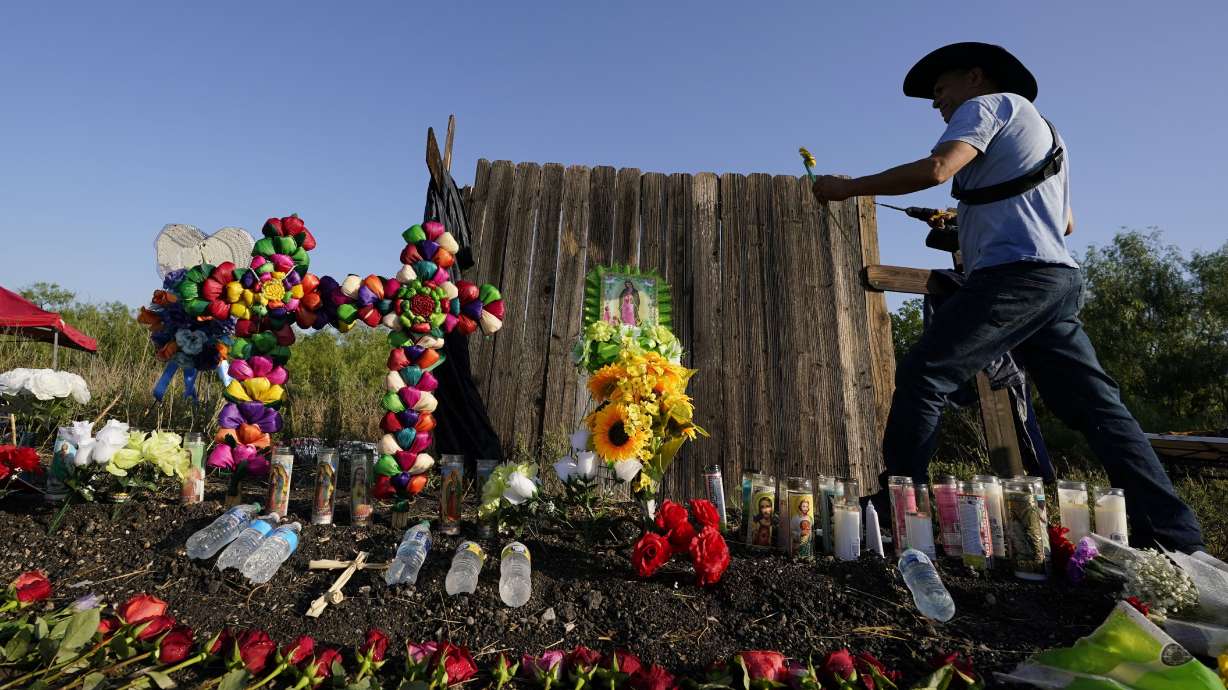Estimated read time: 4-5 minutes
This archived news story is available only for your personal, non-commercial use. Information in the story may be outdated or superseded by additional information. Reading or replaying the story in its archived form does not constitute a republication of the story.
SALT LAKE CITY — The death toll continues to rise after a trailer filled with dozens of migrants was discovered in San Antonio on Monday, with 53 now deceased and over 12 hospitalized.
It's believed to be the deadliest smuggling event to occur along the U.S.-Mexico border.
The grim discovery, made by an employee of a local business who heard a cry for help, is the latest example of what has become an increasingly deadly journey across the southern border.
"Tragically, it's certainly not unique," said Matthew Soerens, U.S. director of church mobilization and advocacy for World Relief's refugee resettlement agency.
A rising death toll
Since 2014, the U.N.'s immigration agency has documented a rising number of migrants dead and missing along the U.S.-Mexico border, with every year except for 2020 marking a new record. Consider:
- The deadliest year for migrants traveling across the southern border was 2021, with 728 reported dead or missing.
- As of May 2022, at least 244 are missing or dead, a figure that does not include the tragedy in Texas and other incidents in June.
- Since 2014, a total of 5,755 migrants have died while traveling across Central America, North America and the Caribbean.
Although data from the U.S. border patrol has not been updated since 2020 — and follows a markedly different trend than the U.N. — the number of search and rescues reported by CBP is skyrocketing.
- In fiscal year 2021, the agency reported 12,833 rescue efforts, more than double the previous year.
- So far in FY 2022, CBP has conducted 14,278 search and rescues.
Why are migrants dying?
Dehydration or heat stroke can kill migrants, many of whom make the long walk across the blistering Sonoran desert. A spike in injuries and deaths was reported this year from migrants attempting to scale the 30-foot border wall, the product of an executive order by former President Donald Trump. Drownings are frequent along the Rio Grande, and in June at least 10 migrants were killed in El Paso's irrigation canals.
"We have never seen so many deaths in a short period of time," Fernando García, an El Paso-based activist, told the research and advocacy group WOLA.
The use of semitrailers to smuggle migrants, like the one abandoned Monday, are also on the rise, according to the Wall Street Journal. Officials say the pure volume of semi traffic along the border — there were over 7 million crossings by commercial trucks in 2021 — allows smugglers to blend in.
In December, a trailer carrying over 160 migrants crashed in southern Mexico, killing over 50 people and injuring over 100. Months earlier, almost 700 migrants were detained after Mexican authorities found them stowed away in three separate trailers.
The worst-case scenario is what happened on Monday, where the smuggler abandons the trailer, usually out of fear of being arrested. In 2017, 10 people died after they were trapped in a trailer abandoned in a Walmart parking lot. In 2003, 18 migrants were killed from heat-related conditions. Both incidents occurred in southern Texas, near San Antonio.
Policy solutions
Soerens said U.S. immigration policy is partly to blame, specifically Title 42, which allows officials to deny entry to asylum-seekers in the interest of public health. While the law has stemmed the flow of legal immigration, experts say it often incentivizes illegal immigration.
"It's fairly likely that at least some of the people who died ... either tried to seek asylum and were turned away without due process under Title 42 or heard that you shouldn't even try because you'll be turned away," Soerens said. "Your only option if you want to make it into the U.S. is to sneak in undetected. And that's where you get into these incredibly dangerous circumstances."
There are no legal consequences for migrants expelled under Title 42 — that means they are deported to Mexico regardless of their country of origin, and often try to enter the U.S. repeatedly.
Soerens on Monday reiterated a point many immigration advocates have been making for months — repeal Title 42.
"I think we will prevent or at least minimize future incidents like this if we end Title 42 and invest in robust asylum processing at the border, so that people have due process and can get a hearing in a timely fashion," he said.
Though it would require an act of Congress, increasing the number of available visas, particularly those sponsored by employers, would also grant a safer pathway to the U.S. for migrants.
"The vast majority of people would rather do that than anything that involves a dangerous trip," Soerens said.
The Farm Workforce Modernization Act, which already made it through the U.S. House, would allow more undocumented agricultural workers to apply for a visa.










